Curious about product design?
Our survey answers provide the best tips and tricks so you can stay ahead of the game.
Check out our new creative project to supercharge your progress!
ASK ME ANYTHING!
Today, I publish the answers in the blog so all of you can benefit from other people’s questions.
Here we go! Here is a selection of 73 things you asked me about Design Sketching! Part 1.
What You Need To Know About Design Sketching | Part 1
Let’s start!
1. Luke, 17 from London:
What’s the hardest part about designing a new product?
The most common mistake we see from beginners is: They stick to the first idea or first sketch that looks cool.
I remember the time when I felt lost in front of my blank page. I made a sketch that looks awesome or at least good enough, and I tend to like it a lot (too much). I unconsciously hoped and convinced myself that idea was THE NUMBER ONE IDEA! So I spent hours trying to develop it without considering any others. And sometimes even though it drove nowhere, I became stubborn and even rejected feedback. If you face that situation, know when you need to put an idea aside and move on.
My recommendation is:
Don’t rush for your first ideas, they are just the starting point.
Make sure you develop multiple axis of research as you will discover even more awesome proposals on the way! You would be surprised how much more creative you can be when you get out of your comfort zone.
TIP: To expand your creativity, remember to use these techniques:
What if? And be provocative. Always create with the users in mind. Propose various stories and scenarios of life. That’s how your sketches will have meaning and will give Life to your imagination.
To know more:
– TIP 78: Ask yourself “What if” to explore new ideas
– Edward Eyth interview:” The whole process can be reduced to one fundamental question: “What if?”
2. Pat, 26 from USA, aspiring designer:
Digital art vs conventional sketching… What is your opinion on the differences and advantages of both?
To me, both are essential for the design industry, and the trend goes like that:
Conventional sketching is a no-brainer. It’s fast, easy, and convenient. It’s great for expressing ideas on the spot and making research.
Digital sketching is awesome for presentation purposes where you can give great rendering to your sketches. Photoshop and Illustrator allow you to test and modify colors and textures fast.
A common practice is to sketch on paper, scan, and render on a computer.
Once again, this is a trend. Feel free to explore other ways. For the day I tried to mix watercolor with product design sketch. Take what’s happened in the industry as a guideline, and feel free to explore other ways too – so you may create your own style.
3. Shubham, 24 from India:
What’s your biggest strengths and weaknesses when it comes to Design?
My strengh?
I guess creating stories. This is where I feel the most of fun at sketching them. At this stage, you may not even draw the product itself, but thumbnails of people using it. If you don’t know how to draw people, it doesn’t matter. Drawing stickmen will do at early stage.
TIP: For presentation purpose, you can cheat taking picture of yourself in situation and use them as underlay.
My weakness?
Know when to stop making research on time so I could get a comfortable timeframe for rendering, and not feeling rush before the deadline (so I could get a proper night of sleep before the presentation day). I often went to school to present my project without sleeping the previous night. Ohoh.
TIP: That was a pretty much “bad habit” as I tend to put aside my personal life for work. But if you want to perform long-term, you got to find a good balance.
Here is an extra point. Good working/life balance to me DOES NOT mean half/half each. As this equals to average intensity for both.
The good balance would be identifying the time when you put all your heart into your work, and some others into your personal life, your family. That’s how you can always live with full intensity! If you are a student in a design school, make sure your girlfriend and parents are aware of the amount of work you need. On your side, make sure you spend quality time with them. 🙂
4. Abhishek Sunny Pingua, 22 from India:
Can I become an automotive designer without going to design school by self-learning and taking online courses?
Basically, a portfolio matters more than a degree. So yes it’s possible – However, with or without an online course you will need a mentor to get results faster.
It all depends on what you will be able to produce and how much creativity you can show. To me, I would still recommend you to join a design school as the environment will help you reach your goal and get sensitive to innovation and users.
The biggest mistake you would do is to be able to design cars only using actual references. You are more than a great sketcher, but a designer. Make sure to show disruptive innovation. Something that is totally new and/or relevant to our upcoming future.
5. Jayant:
How much do you draw each day?
It’s one of the most common questions I receive from my students and my friends. They actually meant: How many hours per day is needed to get results? What I am tempted to say is that the more you draw, the better your level will rise. With good guidance and practice in sketching fundamentals, that will be your logic path.
To define how many hours is needed? Ask yourself: how much eager are you to learn how to draw? Then you will find the answer in your heart. If I draw 10, and you feel you wanna draw 20, please go ahead! Drawing is a lifestyle. Draw without counting the hours!
To know more:
– The “10.000 hours of practice” are under fire.
6. David Doodley, 32 English, live in France | Footwear designer:
I’d like to be as fast and accurate as possible, what is the best approach?
Stop looking for perfection.
Practice drawing with fluidity without fear of mistakes. Look for gaining precision along the way. How? Start with light pen pressure and iterate with bolder one. Your lines and curves will get more accurate soon with practice. Soon, you will need lesser lines to draw and your sketches will get a more minimalistic and clean look. 🙂
+ Make sure to practice your sketching fundamentals in parallel.
To know more:
– TIP 97: How to improve your quality of lines
7. Adrian Baranek, 24, Germany I am a design student in Schwäbischgmünd: Will the Designsketchbook show open to all?
Yes! The Design Sketchbook Show will be open to all. However, I will introduce you to a new membership design program where I will be able to follow up you guys progress! 🙂
8. Abhishek Neogi, 20 years old, India:
Hmmm… How are you and how was your day? 🙂
Haha thanks, Abhishek for asking. Abhishek is one of my students.
I am fine, thank you! And happy to take the day to answer you guys hoping it will be helpful.
9. Seher, 22 from Denmark | Student in Engineering in Integrated design:
Can you show us/me the level where you start drawing? And how do you draw now? 😀
Yes, of course, I invite you to see more in this article: How I started design sketching and kept motivated?
My drawings were flat like a pancake. But I did not desperate and learned that people who succeed in my school are no better than any of us. They started from zero as well.
10. Rahul Soni, 20 from India | Footwear designer:
How can I sketch the shoe in different -different perspectives?
Train at drawing the last first (The last is a standard shape of a foot). So you can draw your design on top of it. Make sure you draw the last seeing it in transparency.
11. Valentina, I’m 20, I live in Chile and I study design.:
Any plan of making a book in the future?
I am thinking about it more and more!
12. André, 38 years, from Brazil | Product designer:
Tell me about your professional experience until now
I started design later than most of the students and I graduated at 27.
Since I love traveling where I worked for Adidas in Germany, Daihatsu in Japan (internship) and also a local company in Singapore and China. Design is to me a universal language that has no geographical barrier. I invite you to read more about my design background here. 🙂
13. Murray, 29 | Industrial Design student
How important is traditional sketching to modern Industrial design?
It has always been important, and will still be forever.
There is no faster way to express ideas than hand sketching.
You don’t have to see traditional sketching opposing Modern Industrial design.
They are complementary. If there is one thing the world will need forever, is your ability to sketch.
14. Kiran I am 22yrs old | Product design student:
Can you give me any references where I could learn more basics in sketching
The book Sketching the basics, 2nd edition from Koos Eissen is great!
15. Borne’ Sanders, 23:
How to stay focused?
I would say cutting distraction from social media is a great start.
There is a technique called POMODORO. It’s about doing more in lesser time.
Basically, use the egg timer for cooking eggs. Set up the time to 20, 30, 50 minutes. Up to you.
Then stick to your task, and try to produce as much as you can till the Pomodoro ring. Take a 15 minutes break. Rest the timer and start another session!
16. Erick Beebe, 59, USA | from IT and in love with Concept art:
I like the program you’re currently running. Will the new one build on that?
Yes, they are complementary. 🙂
17. Chris, 34 Trinidad | From IT:
How to draw dynamic poses?
You gotta focus on the line of action of your characters. Use it as a guideline to draw the poses. Don’t hesitate to exaggerate like how the cartoonist does!
To know more:
– TIP 1: Sketch the world! (Showing dynamic football player poses)
18. Optimus 19 Spain, Student:
Would it be possible to have a web’s spanish version?
Maybe one day I will translate the whole blog into Spanish. But it’s not yet planned for now. There is already a Spanish version of the Designer Starter Kit. I send it to whoever registered to the blog and requested for it. 🙂
19. NAVED, 24-year-old from India. In love with animation.
What should I do to be out of the crowd ???? I really want to develop my sketching skills.
Start by copying the artist you love. Study your sketching fundamentals in parallel.
With the mix of influence and self-exploration, you will create your own style.
Look for an expressive way to convey your ideas through sketching.
To know more: How to develop your own style?
20. Nickolas Teixeira from London | Product design student
Would you ever consider giving feedback sessions? For people who are struggling and maybe give advice on where they need to focus and improve.
Yes, I do! I also think feedback is essential to progress.
I have an online course called Sketch like the Pros where I give one-to-one follow up to my student. The registration are now closed as the course is now ongoing. However, I am now preparing a new course where there will be a community of passionate who can give feedback and cheer up each other! I will be there to give you online courses, tasks, and challenges and be there to follow up on your progress. : )
21. Josh, 29, US. writer in tabletop games and in love with Concept art
I’m having trouble doing consistent line weight. If I have a product with two or three connected pieces in Perspective, how do I know what to make thick and thin?
Here is a good introduction to line weight: How to get your sketches to convince your audience?
I may talk about this topic during the upcoming Design Sketchbook Show!
The best trick for that is to think of wireframes. You will build your surface like 3D software. A tip is to think of a cloth with a grid pattern that would fall on your object.
23. My name is Kevser and I’m a product design student in Turkey
How can I do better projects at school?
Your school is going to emphasize creativity more than your sketching skills. So you got to be creative to fill their expectation, but also self-learning your sketching skills to be able to convey your ideas with impact.
If you are just starting, I recommend you go through the Ugly doodles technique.
Start ugly to drop down your ideas, and refine your sketches along the way.
24. Lidia – 51yrs – Australian – Senior business analyst (IT): How do you motivate yourself to practice sketching when you’re tired and don’t feel like sketching?
Always remember WHY are you doing it.
When your WHY is powerful, the HOW does not matter much anymore, and you will cross the obstacles with passion.
TIP: Don’t think of the why for yourself only. But about your impact on others.
Are you doing it for helping people?
Contribute to your country?
Make your family proud of you… ?
Showing your kids that perseverance is beautiful? And so on.
25. Francisco Juárez, 47, Product Designer.:
I believe that sometimes designers worry more about producing great sketches/drawings/renderings than on the design idea itself, what do you think?
I agree. Art & Design is also about visual performance.
The best is to make sure your sketch is serving the purpose of your idea.
At Adidas, you could have 10 beautiful sketches or renderings – if you had no story, your proposal would be rejected. Some companies go for the look, others for the story.
From my experience, the most innovative companies are the ones that goes with the story. They are also the one I admire the most.
26. Erika Reyes, 25, USA. Working part time at a learning center while I get my BID in Industrial design (I have a BA in psychology and sociology):
Many people have told me to practice drawing from life, but I have been having a hard time being able to have things scale properly.
I will look at an object, start at one part, and end up having to make the entire thing bigger because I didn’t leave enough room or I messed up where things are supposed to go.
I thought focusing on one portion at a time what good but when I look at the end result, things aren’t correct in relation to one another.
What exercise or technique should I practice to help?
You are having a common mistake that even if you practice drawing from life for ages, you won’t grow your skill much. You have to go through the sketching fundamentals and start your sketch by simplifying the object first. Draw the global shape in perspective with light pen pressure. Then, add the details. That’s the only way you can make sure drawing with good proportion.
To know more: TIP 162: Wanna get cool sketches? Do not start with details.
27. Shira Macedo, 24 years old and I live in Caracas, Venezuela. At the moment I’m studying industrial design currently in the 2nd year.
For me has been really difficult to learn to draw, because my lines are too rusty. I wanted to ask you, how can I get better in that area?
You gotta draw using the ghost drawing. It means simulating the movement of your line, curve or circle before drawing them. You have all the details in the Designer Starter Kit!
28. Nico Weber, 18, Germany and I’m a student.
When did people first contact you about a design job?
When I was a student, we had to do an internship in the 3rd year.
However, we had to present our portfolio early during our 2nd year of school.
This is when we start having opportunities with the “real world”.
The school did put us in contact with companies, so we could be interviewed.
We were in a fair competition with our classmates.
The most interesting profiles had the chance to be interviewed by the most interesting companies.
We were not judged on our project marks – but on our portfolio, motivation, and interest.
29. Emmanuel Ojo,16+yrs,Nigeria I’m currently a student in high school
Do you live in Malaysia? 🙂 and how can I overcome procrastinating when it comes to practice
I am traveling in Asia, but also go back to France when I can.
About fighting procrastination, I would recommend you to think about: What is your compelling Goal? Feel free to write it down, and stick it somewhere visible so it will remind you WHY you are practicing to get better than yesterday.
To know more: Tip 147: How to keep motivated having poor results and avoid procrastination
30. Esra, 35 from Turkey – Industrial and User Experience Designer:
Am I late to learn good sketching? Can really everybody sketch well?
Of course, you can. There is no age for sketching. If I am not wrong, your body does not have to be flexible as a ballerina dancer :P. Seriously, with proper guidance and support, everybody can learn. To me, learning how to sketch is technically easier than learning a new language.
31. Mikael Nielsen, age 45, Denmark, Industrial designer:
Do you have more guides than the first 1-4?
32. Stephany, 24, Industrial design student: How did you become an industrial designer? Is there a way to learn the matter needed without having a bachelor’s degree?
I attended a design school for 5 years, and push for multiplying experiences such as applying for an extra internship but also being an extra exchange student in the US studying in a fashion school instead of taking my summer holidays. Just saying that even if there are rules, you can bend them to do more and learn more.
Show your motivation and you will find people who will support you.
If you don’t want to get a degree, I highly recommend you meet designers so you can make sure you are on track. As soon as you can, try to negotiate an internship or even work for free. Your objective won’t make money but to learn. So that’s totally fair. You work for free, they take care of you. That’s how you will start building your portfolio.
33. Ken Moyer, 40 from USA. Graduate Industrial Design Student:
How do you get confident and proficient at speed sketching a product?
You can look at David Doodley, for the 6th question.
34. Saptarshi Sarkar,23, from India. A mechanical engineering student by education and a design enthusiast by passion:
How should I plan my design exercise routine?
Start with learning the basics and sketch anything simple that is related to it. Continue trying to draw them from different angles.
TIP: Do not study alone but with someone who has higher skills than you so you can progress much faster.
I am aware of how difficult it is to find a mentor or even friends who share the same passion. This is why I am preparing a new Creative program where I will give online courses and invite the members to give feedback to each other. I will follow up members’ progress in the group.
35. Vincenzo, 29yo industrial designer from Italy: What are the pens that you usually use for sketching and why?
– Black Ballpoint pen: That’s my main tool.
I use it because it’s fast and easy to get a lot of pen pressure sensitivity.
You don’t have to sharpen it, and I don’t need to erase anything from my sketch. Why?
Because I rather iterate on top of my drawing or draw an extra sketch than suppress my mistakes. Keeping sketching allows me to keep a great flow of ideas, and sketch much faster.
-Black Stylist: Felt pens are also nice to use.
Their lines are clean and dynamic. However, note that the quality tends to decrease along the way as the nib is pretty fragile.
– Pilot Twin marker: This pen is super fun to draw with fluidity.
It expresses a lot of energy in your lines. Draw with the thick nib so it will “force” you to get rid of perfection.
36. Krishnanunni, 24, India: I am a final year architecture student who wishes to pursue an industrial designer career along with my architecture practice.
It would be awesome if you could criticize our sketches or create a platform to discuss, criticize, and encourage sketching with all passionate people..
Yes, all the things you said are planned in the new program “Bring your Sketch Alive” that will allow you to post your sketches and receive feedback from the community and me! 🙂
Alrighty, we have covered about half of the questions. I hope you found this Q&A session interesting. Check your email, I will publish the second part by tomorrow. If you have any questions about “Bring Your Sketch Alive”, feel free to send me an email at choutac@thedesignsketchbook.com or leave a comment below!
Take care.
Cheers,
Chou-Tac
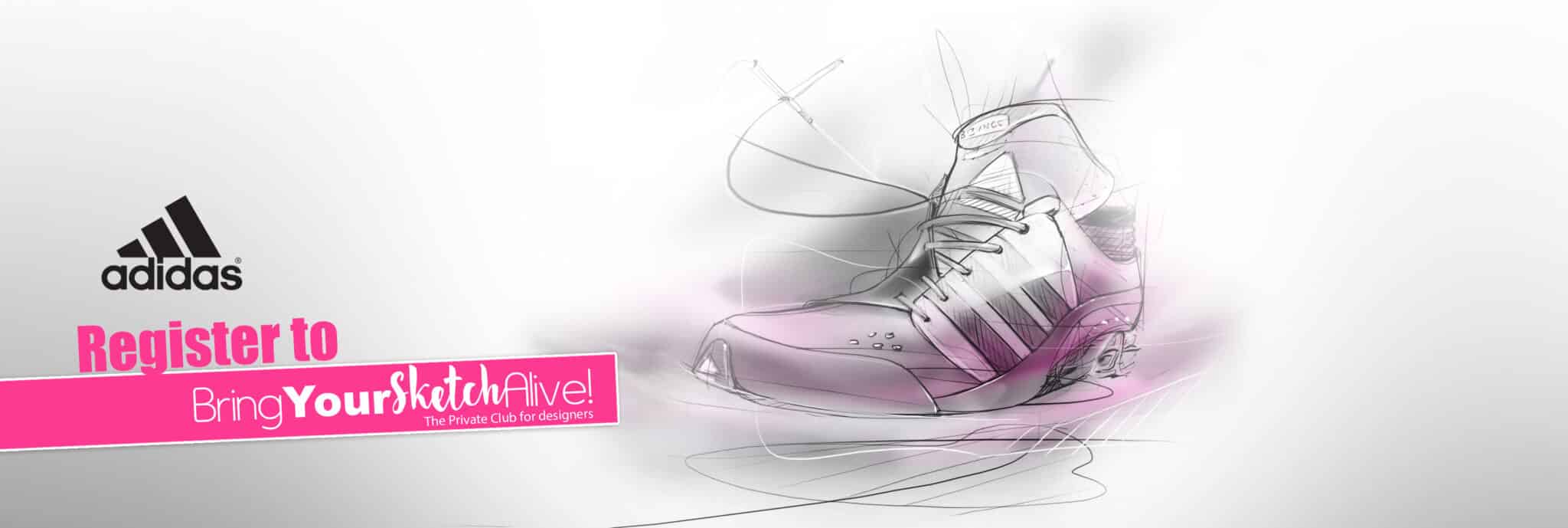
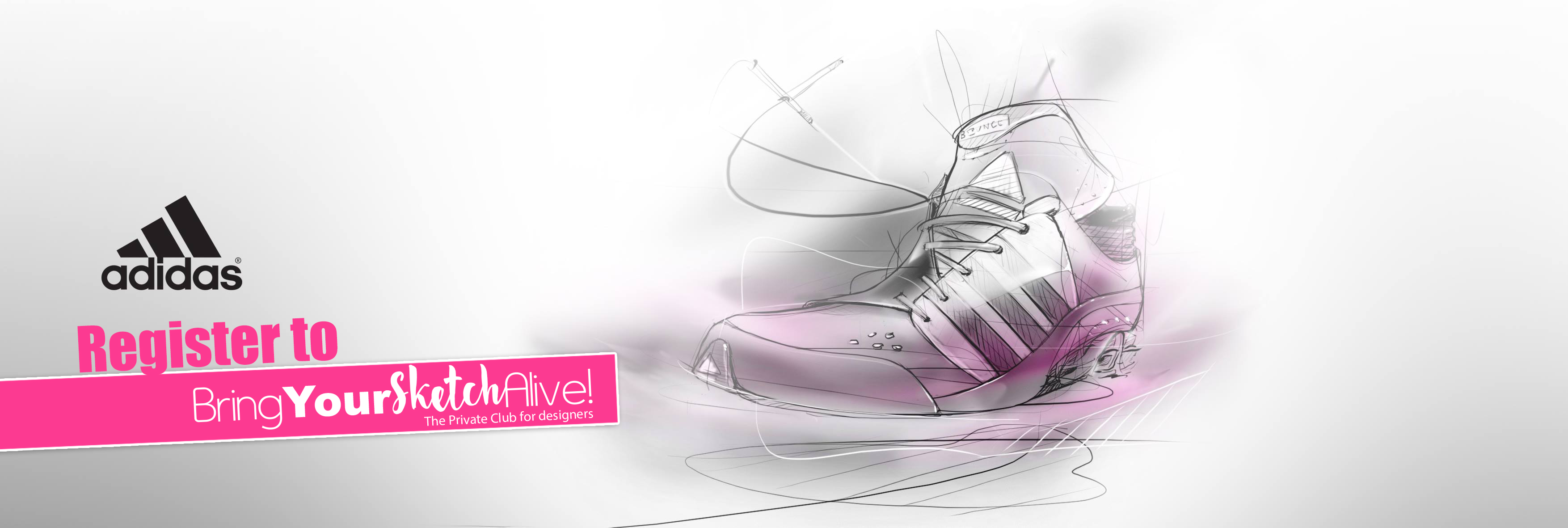
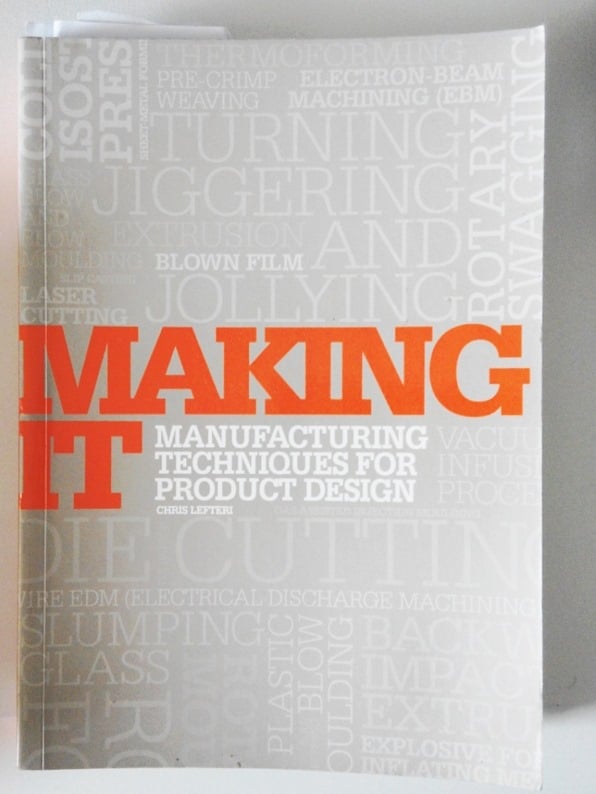
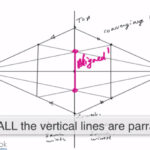

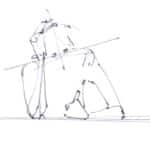

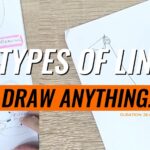
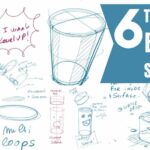

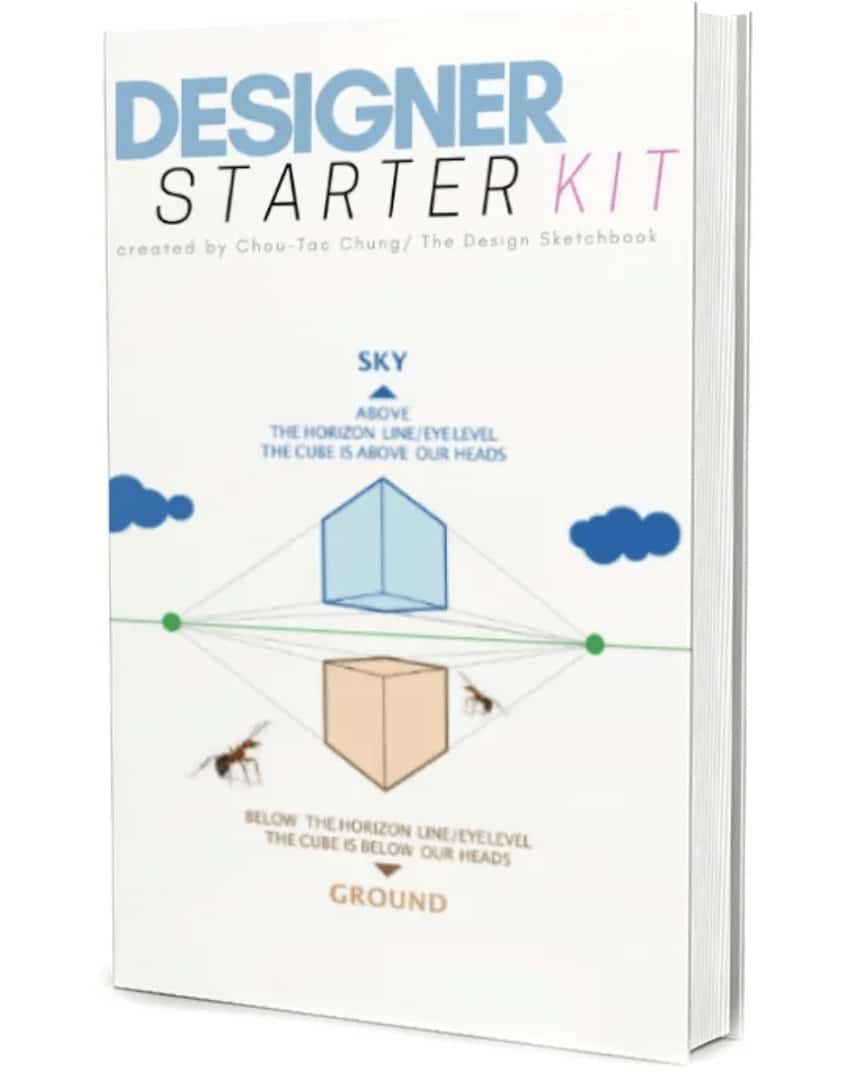
Thank you, Mr.Chou, for replying us.
By the way, I had my CEED aptitude exam on last sunday. I found it easy. 🙂
Thanks to you. 🙂
Congratulation Krishnanunni !! 😀